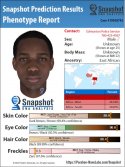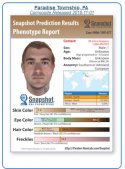Thanks for the link
@evilwise . I agree the tool is invaluable! It beats relying on a decades-old clay bust reconstruction IMO. But they do usually give the disclaimer about weight, hair style, etc.
I found this when looking into the OP and I very humbly admit that I didn’t know Parabon was a catalyst to the changes in GEDmatch.
The controversial company using DNA to sketch the faces of criminals (BBM)
The company had made its name by comparing suspects’ DNA to profiles on genealogy databases and piecing together family trees to track down alleged offenders.
But then controversy erupted over a case Parabon helped to solve, in which a teenage boy had violently assaulted a septuagenarian in a Mormon meeting house in Utah. The Utah case generated public backlash because of concerns over privacy.
Genealogists at
Parabon had been generating leads by sifting through a database of DNA tests called GEDMatch, a free-to-use website that allows users to upload test results in the hope of finding long-lost relatives. At the time, GEDMatch allowed law-enforcement agencies access to the profiles to help solve murders and sexual assaults, unless users specifically opted out. The police, aided by Parabon and companies like it, made new arrests weekly.
But the Utah case was not a murder or a sexual assault — and so was not covered by the website’s disclaimer. The assailant had left traces of blood at the scene, and the detective in charge of the case, Mark Taggart, made a personal plea to GEDMatch’s founder, Curtis Rogers, for access to the database. When it was granted, Parabon, which had initially refused the case, signed on. The company traced several partial DNA matches to individuals living in the area, and narrowed in on a suspect, a teenaged boy who was a relative of one of them. Taggart made an arrest.
That triggered an immediate backlash from genealogists, privacy experts and the wider public at the violation of GEDMatch’s agreement with its users.
In response, Rogers required the site’s millions of users to specifically opt in to law-enforcement use. Overnight, Parabon lost its major source of DNA data.




